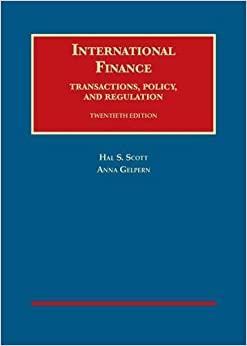Question
So, the brewery selected its place and now needs to hire folks. After some testing, they expect to have approximately 2,000 customers per week. Since
So, the brewery selected its place and now needs to hire folks. After some testing, they expect to have approximately 2,000 customers per week. Since they will be open 7 days a week, they need to hire people to help serve their beer. They know that Friday and Saturday will drive sales. Between these 2 days, they will get 50% of their weekly sales. So, Friday has 25% of sales and Saturday has 25% of the sales. As for Sunday to Thursday, they assume they will get 10% of sales on each of those days.
Q1) How many people do they expect to get each day?
| Sunday | Monday | Tuesday | Wednesday | Thursday | Friday | Saturday |
| 200 | 200 | 200 | 200 | 200 | 500 | 500 |
Q2) Each day of the week, they have set hours. Based upon those hours and the number of customers per day, determine the average number of customers per hour.
| Day | Open | Close | Avg Cust/hr |
| Sunday | 12:00pm | 10:00pm | 20 |
| Monday | 4:00pm | 10:00pm | 33.33 |
| Tuesday | 4:00pm | 10:00pm | 33.33 |
| Wednesday | 4:00pm | 10:00pm | 33.33 |
| Thursday | 4:00pm | 10:00pm | 33.33 |
| Friday | 4:00pm | 12:00am | 62.50 |
| Saturday | 12:00pm | 12:00am | 41.667 |
Q3) Using the Multiple file from the author, use the average customers per hour data above and a server can handle 12 customers per hour, add servers such that the wait time for a customer to order their drink is under: 5mins, 3mins, 1min (NOTE: There is a change in time units.)
| Day | 5 min | 3 min | 1 min |
| Sunday | 3 | ||
| Monday | 9 | ||
| Tuesday | 9 | ||
| Wednesday | 9 | ||
| Thursday | 9 | ||
| Friday | 13 | ||
| Saturday | 10 |
Q4) We know that the values you just calculated are based upon the average number of people entering the brewery. Use a simulation and an appropriate probability distribution (cough cough Poisson Cough cough) to determine the 80th and 90th percentile for people entering each day.
| Day | 80th | 90th |
| Sunday | ||
| Monday | ||
| Tuesday | ||
| Wednesday | ||
| Thursday | ||
| Friday | ||
| Saturday |
Q5) Go back and calculate the number of servers you need under each condition above (80th and 90th percentiles) to get the wait time down to 3mins or less.
| # Servers 3 mins | ||
| Day | 80th | 90th |
| Sunday | ||
| Monday | ||
| Tuesday | ||
| Wednesday | ||
| Thursday | ||
| Friday | ||
| Saturday | ||
Q6) Should you schedule people at the brewery based upon the 50th percentile or the 80th/90th percentile? Why or why not?
Q7) Suppose that you schedule people based upon the 80th percentile and find that some days are really slow. Meaning some of your employees are not making enough money to make showing up worthy of their time. As the business owner, explain to your employees why you are so over staffed.
Q8) As the business owner, what can you do to help your employees make it through the slow times?
Q9) You need to order material to make the beer. Calculate the Annual Holding Costs for 100 sacks of Grain A and 200 sacks of Grain B if they cost $50/sack and you have to put that on a charge card that charges you 12%apy. Assume that 100 and 200 sacks of grain are what you go through a month. (So the average quantity on hand is 50 sacks of Grain A and 100 sacks of Grain B)
| Holding Cost | 50 sacks | 100 sacks |
| 300 | 600 |
Q10) If it costs you $100 to have stuff delivered to the brewery, what is your annual ordering cost? (Assume that you are ordering things once a month.) What is your total annual cost?
Q11) Suppose that you want to redo this ordering scheme to minimize costs. Use eqn 10.5 to determine the optimal number of sacks of grain to order. Since both items are going being purchased at the same time, assume demand is 300 units. Calculate your total annual cost using this new Q value.
Q12) If the supplier of grain tells you that they will give you a discount on your grain and only charge you $40 per sack if you order 400 sacks or more at a time. IS this a good deal? (Calculate your Total Annual Cost assuming Q = 400).
Q13) Calculate your reorder point if it will take 10 14 days from the time you order to the time it is delivered. (Use m = 10 and 14, so there will be 2 answers here.)
Q14) On average, how many sacks of each type of grain (A and B) will you have left, using the cheapest option from Q10 to Q12
Step by Step Solution
There are 3 Steps involved in it
Step: 1

Get Instant Access to Expert-Tailored Solutions
See step-by-step solutions with expert insights and AI powered tools for academic success
Step: 2

Step: 3

Ace Your Homework with AI
Get the answers you need in no time with our AI-driven, step-by-step assistance
Get Started


